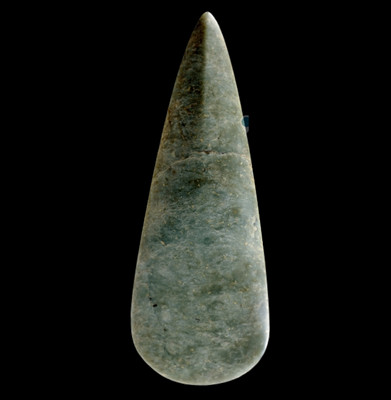But perhaps the most exciting thing about this axe head is what it's made of: not the usual grey/brown tones that you find in British stones and flints-this axe is a beautiful striking green, because this tool is made from jade, or, to give it its precise geological term, jadeite.












